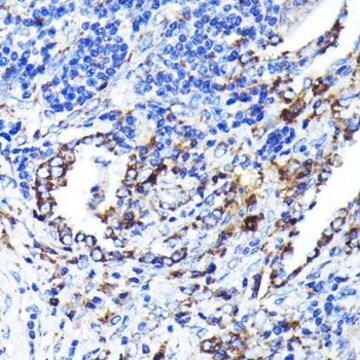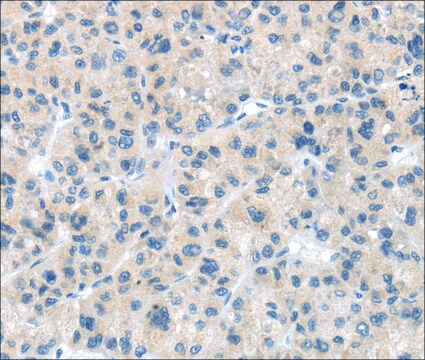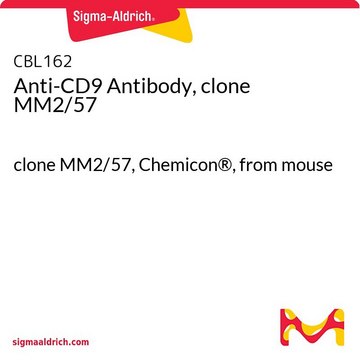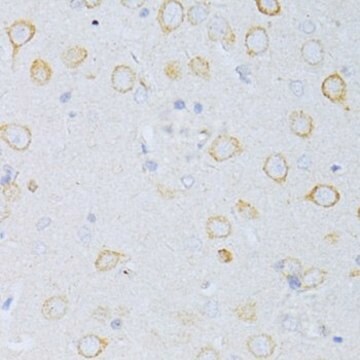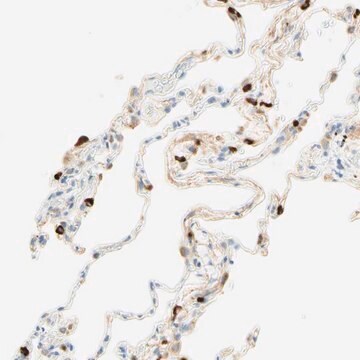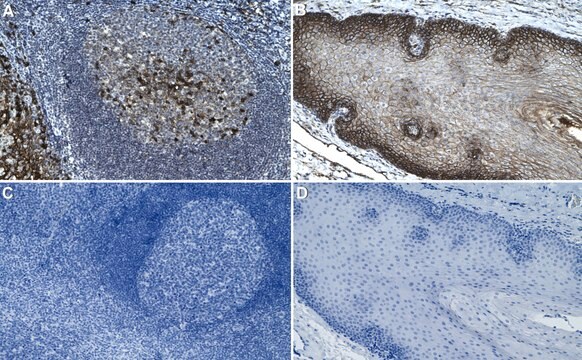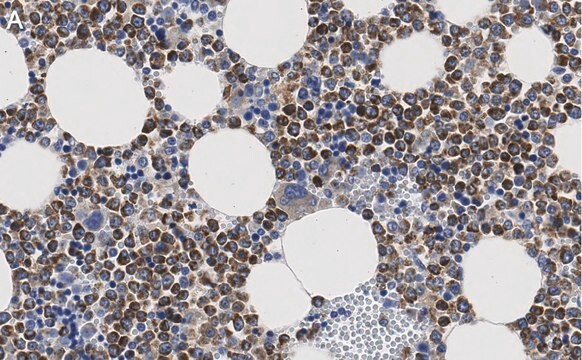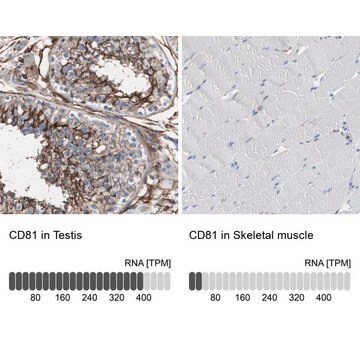C9993
Anti-CD9 antibody produced in rabbit
~1 mg/mL, affinity isolated antibody, buffered aqueous solution
동의어(들):
Anti-BA2, Anti-BTCC-1, Anti-DRAP-27, Anti-GIG2, Anti-Growth-inhibiting gene 2 protein, Anti-Leukocyte antigen MIC3, Anti-MRP-1, Anti-Motility related protein, Anti-TSPAN29, Anti-p24 antigen
About This Item
추천 제품
생물학적 소스
rabbit
결합
unconjugated
항체 형태
affinity isolated antibody
항체 생산 유형
primary antibodies
클론
polyclonal
양식
buffered aqueous solution
분자량
antigen ~25 kDa
종 반응성
human, mouse, rat
농도
~1 mg/mL
기술
immunohistochemistry: 1:100-1:250
western blot: 1:500-1:1,000
UniProt 수납 번호
배송 상태
dry ice
저장 온도
−20°C
타겟 번역 후 변형
unmodified
유전자 정보
human ... CD9(928)
mouse ... Cd9(12527)
rat ... Cd9(24936)
일반 설명
면역원
애플리케이션
- immunostaining
- identification of hypoxia-induced mesenchymal stem cells (MSC-MVs)
생화학적/생리학적 작용
표적 설명
물리적 형태
면책조항
적합한 제품을 찾을 수 없으신가요?
당사의 제품 선택기 도구.을(를) 시도해 보세요.
Storage Class Code
10 - Combustible liquids
Flash Point (°F)
Not applicable
Flash Point (°C)
Not applicable
개인 보호 장비
Eyeshields, Gloves, multi-purpose combination respirator cartridge (US)
이미 열람한 고객
자사의 과학자팀은 생명 과학, 재료 과학, 화학 합성, 크로마토그래피, 분석 및 기타 많은 영역을 포함한 모든 과학 분야에 경험이 있습니다..
고객지원팀으로 연락바랍니다.